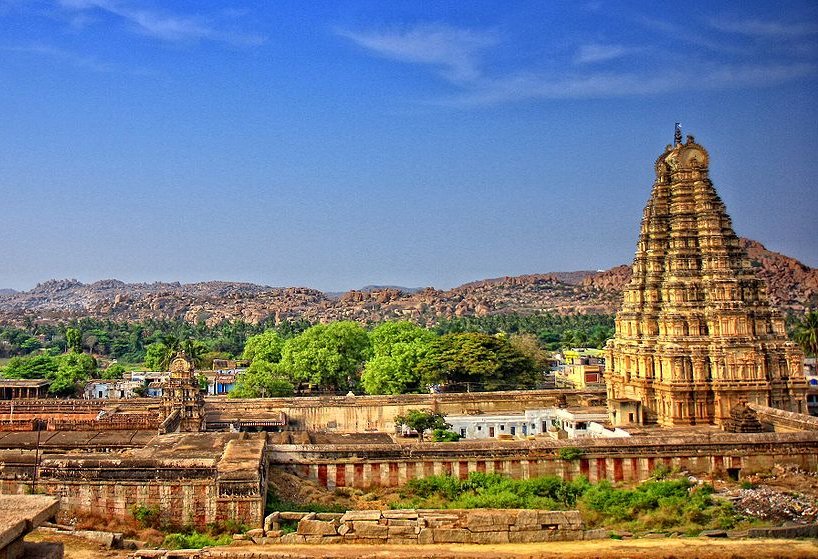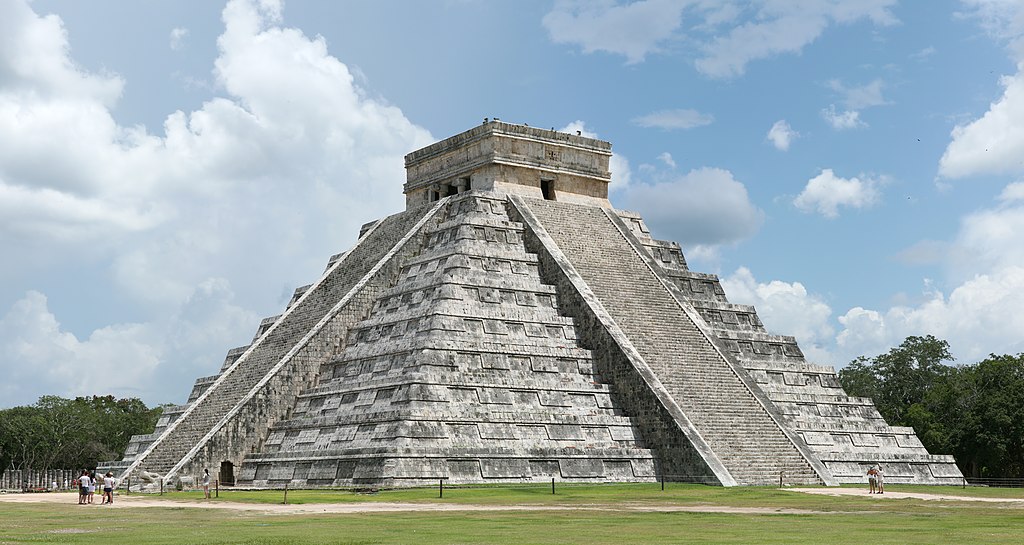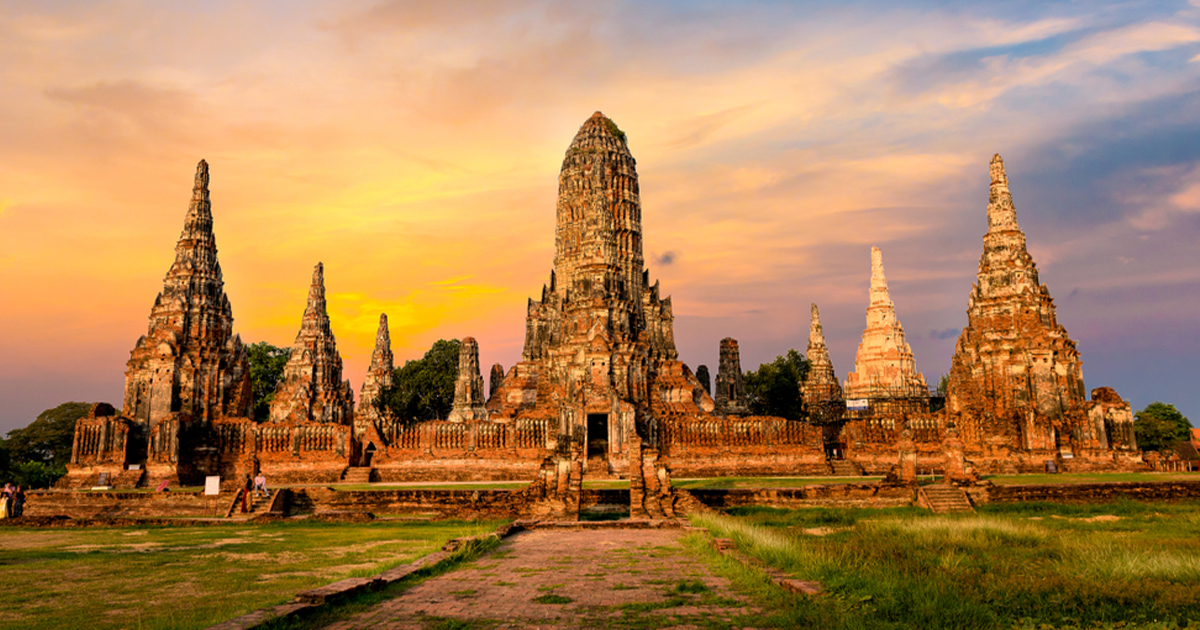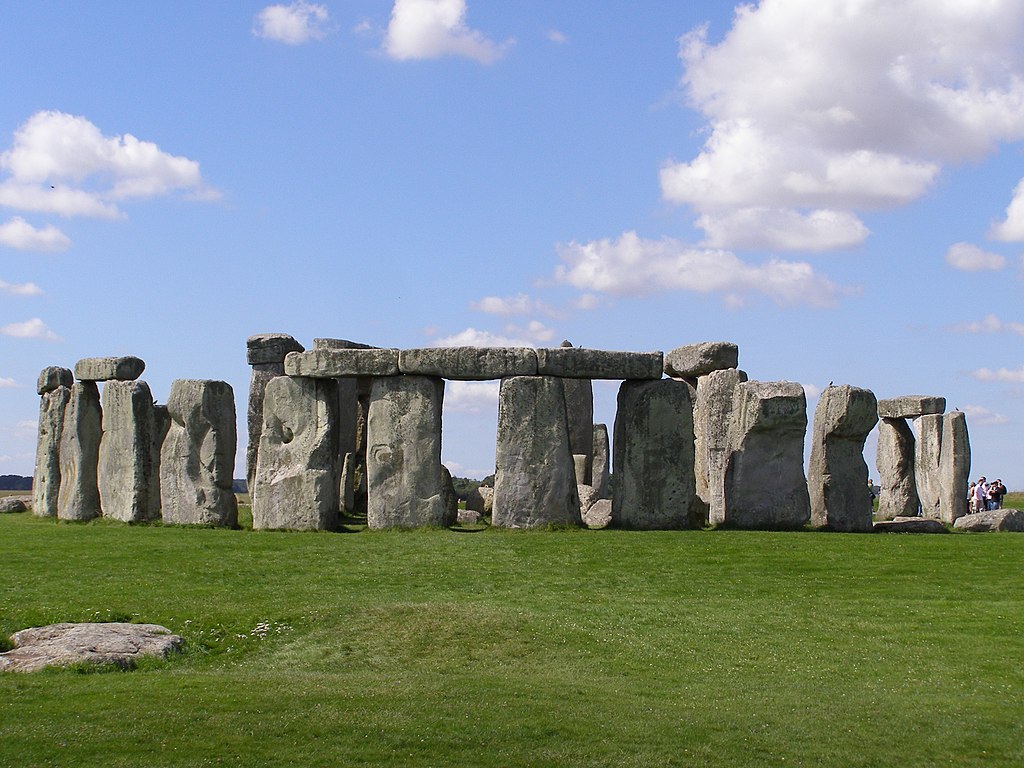The World’s Most Incredible Ancient Ruins
From the remains of once-great cities to the temples that have withstood the ravages of time, the world is full of amazing ruins. Each is a testament to incredible architecture and engineering, and some still contain the key to mysteries about the ancient world that we’ve yet to uncover.
Let’s take a look at some of the greatest ancient ruins on the planet.

Mesa Verde, United States
With 600 ancient dwellings carved into the cliffs, the Mesa Verde National Park is one of the most fascinating ruins to explore. The most famous dwelling is the Cliff Palace, which had over 150 rooms and 23 sacred kiva rooms for spiritual ceremonies.
There’s evidence that people lived in these cliffside dwellings for nearly a hundred years, but they abandoned the area in the 13th century. We’re still not sure why.
Ayutthaya, Thailand
The city of Ayutthaya was founded in 1350 and began as a trading post for the Khmer Empire. For four centuries, it was bustling center of trade and the capital of Thailand.
In 1767, the city was razed to the ground by Burmese invaders. All that remains today are about 50 temples and stone relics that weren’t destroyed by the fire.
 chai photographer, Shutterstock
chai photographer, Shutterstock
Stonehenge, England
With origins that date back more than 5,000 years, Stonehenge is now one of the most well-known ruins in the world. No one knows how this ring of sandstone pillars came to be, but widely believed theory is that they were used for spiritual rituals or astronomy.
Sigiriya, Sri Lanka
Carved into a 200-meter cliff face called Lion Rock, this fortress is believed to have been the capital city of the ancient Kingdom of Kassapa. The fortress was abandoned after the king passed and a Buddhist monastery up until the 14th century.
If you’re feeling brave, you can make the trek to the summit of Sigiriya—the cave shrines, terraced gardens, and water features are definitely worth the climb.
 Diwyanjalee Wanigasekara, CC BY-SA 4.0, Wikimedia Commons
Diwyanjalee Wanigasekara, CC BY-SA 4.0, Wikimedia Commons
Ephesus, Turkey
Dating back more than 2,000 years, Ephesus is an incredible testament to Greco-Roman architecture. People love visiting this site because every part of it is open for the public to walk through and touch.
These ruins are also very well-preserved, with some of the most popular attractions being the Library of Celsus, Hadrian Temple, and The Greater Theater of Ephesus, the ancient world’s largest outdoor theater.
 ultimatejourneys, CC BY-SA 2.0, Wikimedia Commons
ultimatejourneys, CC BY-SA 2.0, Wikimedia Commons
Ellora Caves, India
Construction on the Ellora Caves began in 600 CE and took over five centuries to complete. Buddhist, Hindu, and Jain monks carved 100 monasteries, temples, and caves into a basalt cliff, though only 34 of those caves are open to the public today.
Kailasa Temple is the most famous site at Ellora Caves. It was dedicated to Lord Shiva and is still the world’s largest monolithic structure.
 Vyacheslav Argenberg, CC BY 4.0, Wikimedia Commons
Vyacheslav Argenberg, CC BY 4.0, Wikimedia Commons
Baalbek, Lebanon
Baalbek is home to some of the world’s best Roman ruins. The three temples there, dedicated to Venus, Jupiter, and Bacchus, took 200 years to build. The columns of the temples rise 60 to 70 feet high and are inscribed with detailed carvings.
Every summer, the site is home to the Baalbek International Festival, which features music and theater.
 Véronique Dauge, CC BY-SA 3.0, Wikimedia Commons
Véronique Dauge, CC BY-SA 3.0, Wikimedia Commons
Heart of Neolithic Orkney, Scotland
The relics in the Orkney Islands date back 5,000 years ago. The four most well-preserved groups of monuments—the Stones of Stenness, Skara Brae, Maeshowe, and the Ring of Brodgar—form what is called the Heart of Neolithic Orkney.
The monuments have been well-preserved due to the climate in the region and are so pristine that Skara Brae has been called the “Scottish Pompeii”.
 Dg-505, CC BY 3.0, Wikimedia Commons
Dg-505, CC BY 3.0, Wikimedia Commons
Hegra Archaeological Site, Saudi Arabia
Hegra began as an outpost in the Nabataean Kingdom and was a thriving city from the 4th century BCE to the 1st century CE.
Now, the ruins are home to over 100 tombs carved into the sandstone. The tombs show influences of Greek, Roman, and Egyptian architecture, and are inscribed with warnings of a curse against anyone who dares to disrupt them.
![Hegra an archaeological site located in the area of Al-'Ula[5] within Medina Province in the Hejaz region, Saudi Arabia.](https://www.factinate.com/storage/app/media/splashtravels/2024/2/8/madainsaleh6811791359.jpg) Sammy Six, CC BY 2.0, Wikimedia Commons
Sammy Six, CC BY 2.0, Wikimedia Commons
Derinkuyu Underground City, Turkey
Descending 18 stories beneath the ground, this ancient subterranean city is one of the world’s most unique ruins. Ventilation shafts and aqueducts provided air and water for nearly 20,000 residents.
During sieges, the city could be closed by massive stone wheels and there were miles of tunnels that connected Derinkuyu to other underground towns.
 Nevit Dilmen, CC BY-SA 3.0, Wikimedia Commons
Nevit Dilmen, CC BY-SA 3.0, Wikimedia Commons
Volubilis, Morocco
This magnificent city was built 5,000 years ago, by the Berbers. Eventually, it became an outpost for the Roman Empire, and a place where various cultures and religions melded together.
The site has seen damage from earthquakes, but the thermal baths, triumphal arch, and mosaic floors in the House of Orpheus are still well-preserved.
 Subhros, CC BY-SA 3.0, Wikimedia Commons
Subhros, CC BY-SA 3.0, Wikimedia Commons
Masada, Israel
Situated atop a cliff that overlooks the Dead Sea and the Judaean Desert is one of the world’s most astonishing ruins: Masada.
Masada was the palace of King Herod and, more infamously, the place where the Jewish Revolt against the Romans came to an end, with everyone in the fortress taking their own lives rather than live as Roman slaves.
Hampi, India
Hampi was once the center of the Karnata Empire and is renowned for being the second-largest medieval city (Beijing takes first place). In the 14th century, two princes created a religious center near the river here, and it grew to be the impressive city that we see remnants of today.
 Apadegal, CC BY-SA 3.0, Wikimedia Commons
Apadegal, CC BY-SA 3.0, Wikimedia Commons
Pompeii, Italy
Most people are familiar with the tragic tale of Pompeii: In 79 CE, Mount Vesuvius erupted, covering the city and its 2,000 residents in lava. The lava preserved the city, leaving us with eerie stone remains of people in their last moments.
Much of the city has been excavated, so you can walk the streets and image what Pompeii may have been like before its destruction.
 ElfQrin, CC BY-SA 4.0, Wikimedia Commons
ElfQrin, CC BY-SA 4.0, Wikimedia Commons
Tulum, Mexico
Built by the Mayans in 564 CE, Tulum still enchants tourists for the beautiful design of the fortress. It’s situated on a clifftop, with the fourth wall of the fortress left open to provide breathtaking views of the Caribbean Sea.
In the 13th and 14th centuries, Tulum was a thriving trading hub and home to 1,600 residents.
 Popo le Chien, CC BY-SA 3.0, Wikimedia Commons
Popo le Chien, CC BY-SA 3.0, Wikimedia Commons
Terracotta Army, China
This assortment of life-sized warriors and horses was found in underground pits near the tomb of Emperor Qin Shi Huang. Though only three are open to the public, there are about 600 pits that were built in the 3rd century BCE, and each statue was carved by hand.
In total, creating this massive stone army would have taken about 40 years.
 Jmhullot, CC BY 3.0, Wikimedia Commons
Jmhullot, CC BY 3.0, Wikimedia Commons
Chichen Itza, Mexico
Built in 600 CE by the Mayans, Chichen Itza was a thriving city until is was abandoned in 1221. That's when Mayapan was made the new capital, but remnants of Chichen Itza’s glory days still remain.
The Temple of Kukulkan is one the most famous buildings and features four stairways with 365 steps for the days of the year. During the spring and fall equinoxes, the sun’s shadow over the pyramid creates the illusion of a snake down the north staircase.
 Daniel Schwen, CC BY-SA 4.0, Wikimedia Commons
Daniel Schwen, CC BY-SA 4.0, Wikimedia Commons
Acropolis, Greece
First built by renowned Athenian leader Pericles in the 5th century, the Acropolis eventually became the site of many temples. Perched high above Athens, the remains of these impressive monuments to the gods still stand today and can be seen from anywhere in the city.
If you got to the Acropolis, its best to visit early in the morning, when it’s least crowded. You should also check out the Acropolis Museum to see some of the original artifacts that were found at this site.
 Carole Raddato, CC BY-SA 2.0, Wikimedia Commons
Carole Raddato, CC BY-SA 2.0, Wikimedia Commons
Tikal, Guatemala
Around 600 CE, Tikal was the largest Mayan city and it remains one of the biggest archaeological sites in Mesoamerica.
Exploring these pyramids and temples makes for an unforgettable experience and climbing to the top of the Temple of the Two Headed Snake will give you an incredible view of the surrounding rainforest.
 Raymond Ostertag, CC BY-SA 2.5, Wikimedia Commons
Raymond Ostertag, CC BY-SA 2.5, Wikimedia Commons
City of Caral-Supe, Peru
Caral-Supe was once a sacred city, and the ruins here date back more the 5,000 years. Stretching across 150 acres, the site features a temple, circular places dug into the earth, and earth-and-stone dwellings.
The dwellings are particularly interesting because this kind of architecture would have been difficult to achieve at the time.
 Percy Meza, CC BY 3.0, Wikimedia Commons
Percy Meza, CC BY 3.0, Wikimedia Commons
Aksum, Ethiopia
These ruins are all that remains of the capital city of the Kingdom of Aksum. Here you’ll find the ancient palace ruins, royal tombs, and obelisks that tower above the site. The largest obelisk is more than 60 feet tall.
 cotterillmike, Wikimedia Commons
cotterillmike, Wikimedia Commons
Karnak, Egypt
This ancient temple complex is famous for its massive size and is bigger than most cities in the ancient world.
It took more than 2,000 years to complete and bears the distinct architectural characteristics of the different pharaohs who oversaw its construction. Today, it’s one of Egypt’s most famous and photographed tourist attractions.
 René Hourdry, CC BY-SA 4.0, Wikimedia Commons
René Hourdry, CC BY-SA 4.0, Wikimedia Commons
Borobudur, Indonesia
Originating in the 9th century, Borobudur is still the world’s largest Buddhist temple. After a period of ruin, it was rediscovered in the 1800s and has been a popular destination ever since.
This monument is made of two million blocks of volcanic stone and is decorated with over 500 Buddha statues and 2,000 reliefs.
 Heri nugroho, CC BY-SA 4.0, Wikimedia Commons
Heri nugroho, CC BY-SA 4.0, Wikimedia Commons
Moai Statues, Easter Island
This group of more than 800 statues is one of the most recognizable ruins in the world. They were carved out of volcanic ash by the Rapa Nui people, probably between 400 and 1500 CE.
With limited tools, it probably would have taken about a year to complete each of these 80-tonne monoliths.
 Ian Sewell, CC BY-SA 3.0, Wikimedia Commons
Ian Sewell, CC BY-SA 3.0, Wikimedia Commons
Bagan, Myanmar
Bagan was the capital of a mighty kingdom in the 11th and 13th centuries. At one point, there were over 10,000 temples, shrines, monasteries, and pagodas, but much of the city was destroyed by the Mongols.
Now only 2,000 ruins are scattered along the landscape. One of the coolest ways to view them is with a hot air balloon ride.
 Corto Maltese 1999, CC BY 2.0, Wikimedia Commons
Corto Maltese 1999, CC BY 2.0, Wikimedia Commons
Colosseum, Italy
This iconic Roman ruin opened in 80 CE and is infamous for the brutal gladiator fights that took place upon its sands. With three levels of archways and a combination of Doric, Ionic, and Corinthian columns, the Colosseum is still one of the world’s most impressive displays of architectural engineering.
 FeaturedPics, CC BY-SA 4.0, Wikimedia Commons
FeaturedPics, CC BY-SA 4.0, Wikimedia Commons
Petra, Jordan
Nestled between the Red Sea and the Dead Sea, the Rose City of Petra was once a busting metropolis full of palatial houses and lush gardens. Nomads carved the town into pink sandstone cliffs thousands of years ago.
Abandoned caves, temples, and tombs are all that remain today, though most of this ancient city has yet to be discovered.
 Bernard Gagnon, CC BY-SA 3.0, Wikimedia Commons
Bernard Gagnon, CC BY-SA 3.0, Wikimedia Commons
Machu Picchu, Peru
This famous city from the Incan Empire was so well hidden that even the Spanish conquistadors couldn’t find it. That’s because a large part of the city was built underground.
In 1911, an explorer stumbled upon the ruins of the city, and today they are only accessible by walking or by train.
 Pedro Szekely, CC BY-SA 2.0, Wikimedia Commons
Pedro Szekely, CC BY-SA 2.0, Wikimedia Commons
Angkor Wat, Cambodia
Between the 9th and 15th centuries, Angkor Wat was a the capital city of the Khmer Empire. The site is home to over 1,000 temples that have been reclaimed by the trees and vines around them.
The Angkor Wat Temple is the most popular attraction here, as it is the largest religious shrine on the planet.
 Jakub Hałun, CC BY-SA 4.0, Wikimedia Commons
Jakub Hałun, CC BY-SA 4.0, Wikimedia Commons
Giza, Egypt
Though we know they were created to be tombs for pharaohs, we still don’t know exactly how the pyramids of Giza were built. The size of these pyramids and the precise details in their construction highlight the ingenuity of Ancient Egyptian architects.
 Ricardo Liberato, CC BY-SA 2.0, Wikimedia Commons
Ricardo Liberato, CC BY-SA 2.0, Wikimedia Commons










